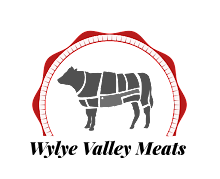Altbier
Horst D Dornbusch
Classic Beer Style Series 12
Brewers Publications, 1998
PB, 171pp
£8.05 inc del from The Book Depository
Review date 16 June 2009
The Classic Beer Style Series has been pretty variable over the years with a number of excellent books, some mediocre ones, and a few absolute stinkers. I am happy to say that "Altbier" is one of the better ones. This is not a new book but I was recently inspired to buy it after a trip to Düsseldorf (and it's Brauhäuser).
Altbier is old beer in the sense that it is made with old fashioned top fermentation although quite a lot of the brewing process follows the typical modern German lager process including decoction/temperature step mashing, cold storage, and filtering. It really is a mixture of the old and the new. For instance, rather anachronistically, the beer goes through a process of lagering and filtration in the cellar and then is racked into wooden casks for dispense in the brew pubs.
Altbier is generally a deep coppery brown colour with something of the look of a medium dark mild. Flavour wise it is rather like a hoppy dark mild although it is clearly cold conditioned which gives it that characteristic "clean" flavour.
Altbier is available throughout Germany but it's heartland is in Düsseldorf and the Rhineland area. Horst Dornbusch hails from this area which you might expect to give him a particular insight into altbier, and this does seem to be the case (which is more than can be said of some of the other authors in the series.
The book starts with the history of alt followed with a discussion of it's flavour profile and the ingredients used to create it. This is all engagingly written and packed with lots of good information and well reasoned arguments of the advantages of multi-temperature step or decoction mashing. In fact I think he may have persuaded me to try step mashing although it will be odd to ask my maltster for "a pale malt with a relatively high protein level, please". Although I have read much about temperature stepping/decoction no previous book or article has so clearly brought out the advantages. This is one of many excellent aspects of this book.
Mind you I still don't quite understand how German beers are supposed to generally have more body than British ones. To me it seems the opposite way round. Or am I confusing fuller fermentation and the effects of cold conditioning with lightness of body?
The discussion of the peculiar characteristics of alt yeast is interesting. This is a beer that must be made with the right yeast (Wyeast 1007 for instance). It is an intermediate type in that, although a top fermenter, it performs best at the relatively low temperature of 13-19°C. It's flavour profiles is best at the lower end of that range, a temperature at which most top fermenters will give up the struggle.
There is a bit of a hiatus after this good start with a description of the equipment that might be necessary to produce alt at home. Some of the ideas seem a bit dodgy or Heath Robinsonish. I would have thought that any brewer buying a specialist book like this would already have a good idea of how to construct a lauter tun and false bottom or how to modify his existing brewing kit as necessary. Of course we must remember that the book is over a decade old.
We are back on the straight and narrow with the description of the characteristic of the altbier brewing process, with particular emphasis on the processes used in commercial alt breweries. There certainly seem to be as many methods as there are brewers which offers vast scope for experiment. Following from this is the chapter on recipe formulation: hardly a riveting read but obviously useful when you get around to brewing your alt.
There are several appendices, some of which are rather good, including descriptions of several commercial examples of altbier, an outline of the production of the malts often used, an introduction to mash pH and water hardness, an interesting essay of whether yeast is a plant or an animal (it's neither according to Dornbusch and he classes it as a protist which is oddly incorrect, our friend saccharomyces cerevisiae being a fungus), technical information on calculating colour and bitterness for your recipe, and finally a unit conversion chart. The book is completed with a glossary.
I really enjoyed this book. It gave me an insight into the brewing culture of the alt brewers and made me want to visit Düsseldorf again for further research (bless you FlyBe for cheap, but un-green flights). I finished the book enthused with the desire to try several of the procedures used in alt brewing in my own set-up. In fact I have started work on a temperature controlled conditioning tank already. I might even brew an alt.
Derek Prentice and brewing in the 1970s part 3
7 hours ago



No comments:
Post a Comment